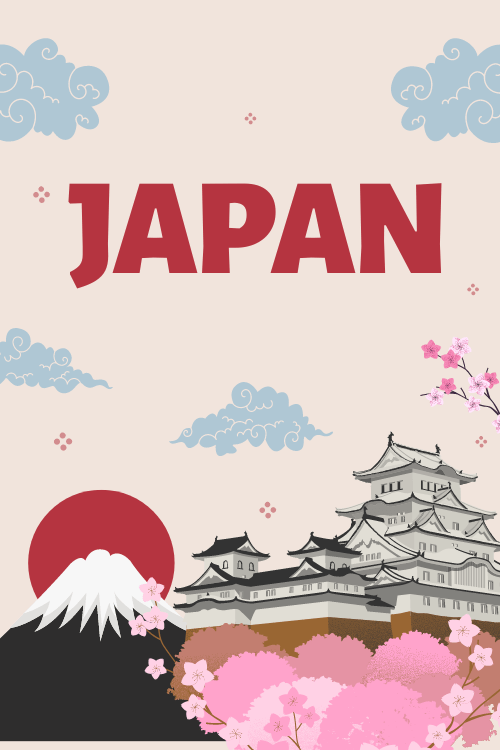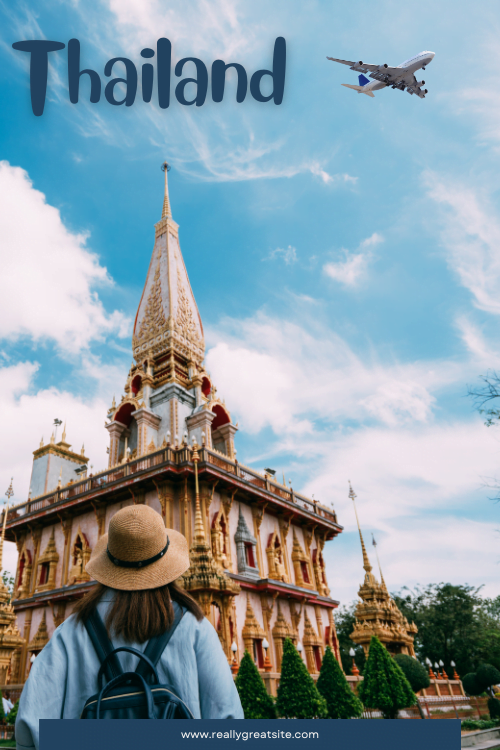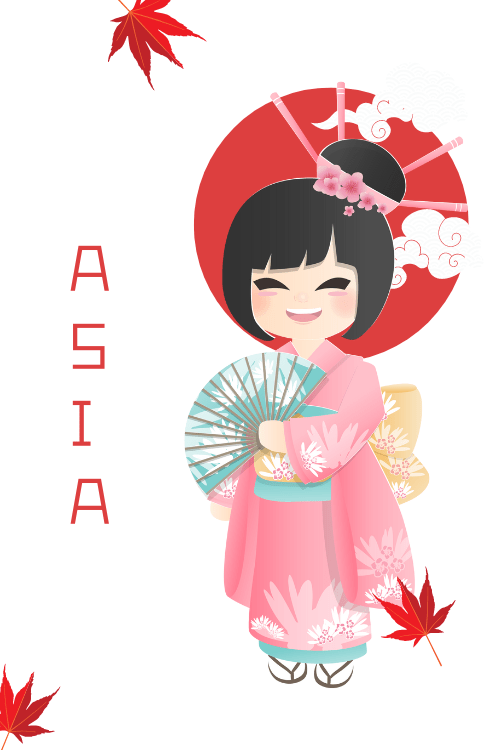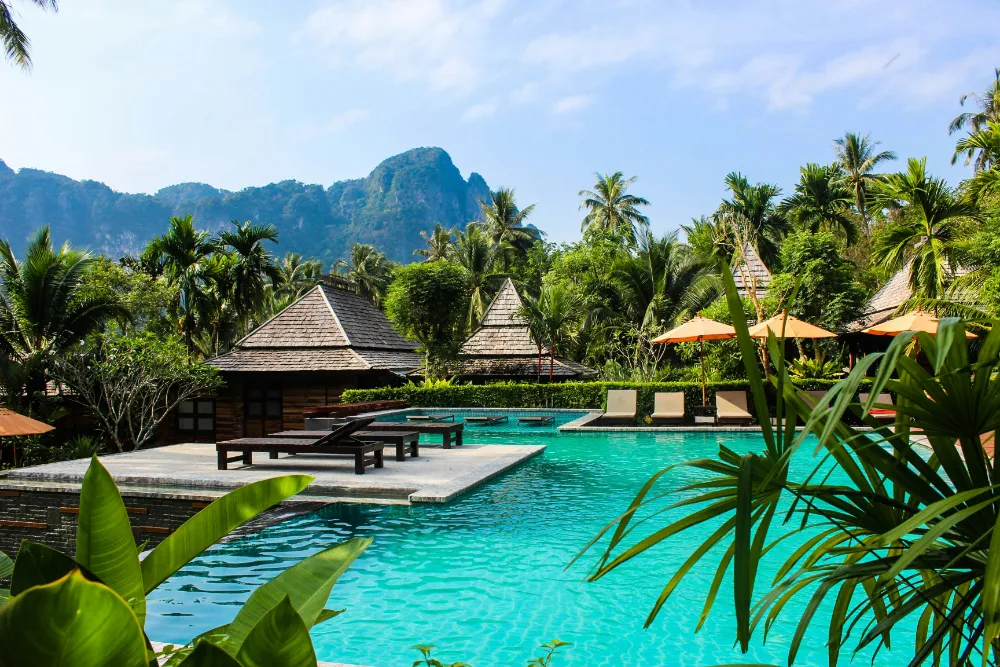Uncategorized
The Best Time to Visit Thailand: A Guide For Every Traveler
The most common advice given to travelers is that the best time to visit Thailand is during the cool, dry season from November to February. While this is a reliable starting point, it only scratches the surface of what this diverse Southeast Asian nation has to offer.
Thailand’s Three Main Seasons
Cool & Dry Season
November – February
The most popular time to visit. Expect pleasant temperatures, low humidity, and sunny skies. It’s perfect for sightseeing and beach hopping but comes with the highest prices and biggest crowds.
Hot Season
March – May
Temperatures soar, especially inland. It’s a great time to experience the Songkran water festival and enjoy fewer crowds than the high season, but the heat can be intense for outdoor activities.
Green & Rainy Season
June – October
The landscape is lush and vibrant. This season offers the lowest prices and fewest tourists. Rain often comes in short, intense afternoon bursts, not all-day downpours.
Regional Weather
Thailand’s secret weapon for year-round beach holidays is its two coasts with opposite monsoon seasons. When one is wet, the other is dry.
Andaman Coast
(Phuket, Krabi, Phi Phi)
☀️
Best Time to Visit:
November – April
Calm, clear seas perfect for island hopping and diving.
Gulf Coast
(Koh Samui, Koh Phangan)
☀️
Best Time to Visit:
January – September
The perfect escape during the Northern Hemisphere’s summer.
Monsoon Seasons
Andaman Rainy Season:
May – October
Gulf Rainy Season:
October – December
Climate Deep Dive
A closer look at the average monthly temperature and rainfall across Thailand’s key destinations.
Average Monthly Rainfall (mm)
This chart clearly shows the staggered monsoons. Phuket’s rainfall peaks from May to October, while Koh Samui’s peaks sharply from October to December, demonstrating why you can always find a dry beach.
Average Maximum Temperature (°C)
Temperatures are consistently warm year-round, but the period from March to May represents the peak of the heat, especially in inland cities like Bangkok and Chiang Mai.
When to Go Based on Your Travel Style
For Budget & Fewer Crowds
The “Green Season” (June-Oct) and shoulder months (Apr-May) make up over half the year, offering significant savings and a more relaxed atmosphere. It’s the undisputed best time for budget-conscious travelers.
For Festivals & Culture
Chiang Mai Flower Festival: A vibrant parade of floral floats.
Songkran (Thai New Year): The world’s biggest water fight!
Yi Peng & Loy Krathong: Stunning festivals of light and lanterns.
Timing your trip with a festival offers an unforgettable cultural experience. November is magical in Chiang Mai, while April is a country-wide party.
⚠️ A Critical Warning: The “Burning Season”
This is a significant, often under-reported issue that primarily affects Northern Thailand. Widespread agricultural burning creates a thick haze and poor air quality.
- When: Peaks in March & April in the North (Chiang Mai).
- Impact: Can obscure views, cause health issues, and impact outdoor activities.
- Advice: If you have respiratory issues or want clear mountain vistas, avoid Northern Thailand during this period. Always check real-time Air Quality Index (AQI) apps if traveling at this time.
The optimal time to visit Thailand depends entirely on your specific destinations, budget, and travel goals—diving the Andaman Sea requires different timing than trekking northern mountains or finding budget beach escapes.
Thailand’s complex regional climate means sunny beaches are almost always available somewhere, with monsoons affecting the east and west coasts at different times.
Smart travelers leverage the often-dismissed “hot” and “green” seasons for unique advantages: experiencing festivals like Songkran, enjoying lush landscapes without crowds, and paying significantly less.
Southeast Asia specialist Jack Tydeman identifies two prime windows—November for west coast beaches or June for cultural highlights with great weather and fewer tourists—emphasizing that Thailand’s success lies in matching your specific travel style to the right seasonal window.
| Season | Months | Weather Overview | Pros | Cons |
| Cool & Dry (High Season) | Nov – Feb | Pleasant temperatures (28°C to 34°C), low humidity, and predominantly sunny skies across most of the country. | Best overall weather for sightseeing and beach activities; clear seas for diving and snorkeling. | Most crowded and expensive period; accommodations and tours must be booked far in advance, especially around Christmas and New Year’s. |
| Hot (Shoulder Season) | Mar – May | Temperatures climb significantly, often reaching the mid-to-high 30s°C, with increasing humidity, especially inland. | Fewer crowds than high season; major cultural events like the Songkran water festival in April. | Can be oppressively hot for outdoor activities; marks the beginning of the “burning season” and poor air quality in the north. |
| Green & Rainy (Low Season) | Jun – Oct | Characterized by frequent, but often brief and intense, rain showers, particularly in the afternoons; high humidity persists. | Lowest prices on flights and accommodations; fewest tourists, leading to a more relaxed atmosphere; landscapes are lush and vibrant. | High waves and rough seas on the Andaman coast can cancel boat trips; some island businesses may close; wettest months are typically September and October. |
When’s the Best Time to Visit Thailand?
Find your perfect travel season with this quick quiz!
Your ideal time to visit is…

Stay Connected in Thailand!
Get affordable mobile data and avoid expensive roaming fees on your trip with an eSIM. Instant delivery, easy setup.
Get Your Thailand eSIMThe Regional Weather Puzzle: Why You Can Find Sunshine in Thailand Year-Round
The single most important concept for planning a trip to Thailand is understanding its staggered monsoon seasons. This meteorological nuance is not a barrier but a strategic tool that unlocks the possibility of a perfect beach holiday at any time of year.
The country’s southern peninsula is flanked by two different bodies of water—the Andaman Sea to the west and the Gulf of Thailand to the east—and they experience their heaviest rainfall at opposite times. This creates a reliable weather balance; when one coast is wet, the other is typically dry and sunny.
Mastering this regional puzzle transforms travel planning from a game of chance into a deliberate strategy. It allows travelers with fixed vacation dates, such as during the summer holidays, to confidently select a destination with prime weather conditions.
Andaman Coast (Phuket, Krabi, Koh Lanta, Phi Phi Islands)
The west coast of Thailand, facing the Andaman Sea, is home to some of the country’s most iconic destinations, including Phuket, the Phi Phi Islands, and the dramatic limestone karsts of Krabi.
- Best Time: The ideal window to visit the Andaman coast is from November to April. During these months, the weather is characterized by dry, sunny days and calm, clear seas. These conditions are perfect for the region’s main attractions: island-hopping tours, swimming in turquoise waters, and world-class snorkeling and diving. For scuba enthusiasts, this period is particularly critical as the renowned Similan and Surin Islands marine parks are only open to visitors from mid-October to mid-May to protect the delicate ecosystem during the rougher monsoon season.
- Worst Time: The southwest monsoon brings significant rainfall and rough seas to the Andaman coast from late May through October. During this period, ferry services can be disrupted or canceled, and swimming at many beaches becomes dangerous due to strong waves and rip currents. While prices are lower, the weather can severely limit the activities that make this region famous.
Gulf Coast (Koh Samui, Koh Phangan, Koh Tao)
On the opposite side of the peninsula, the islands in the Gulf of Thailand have a different weather calendar, making them an excellent alternative when the Andaman coast is experiencing its monsoon.
- Best Time: The Gulf coast enjoys a longer dry season, with favorable weather generally spanning from January to September. This makes islands like Koh Samui, Koh Phangan (home of the Full Moon Party), and the diving hub of Koh Tao fantastic destinations during the Northern Hemisphere’s summer months. While the rest of Thailand sees increased rainfall from June to August, these islands often remain relatively sunny and dry, attracting travelers during the European and American school holidays.
- Worst Time: The weather pattern here is inverted compared to the rest of the country. The heaviest rainfall on the Gulf coast occurs from October to December. During these months, Koh Samui and its neighbors can experience torrential downpours and high winds, just as the Andaman coast is entering its beautiful high season. This is a crucial, counter-intuitive point for travelers planning a year-end holiday.
Northern Thailand (Chiang Mai, Chiang Rai, Pai)
The mountainous north offers a different experience, focused on culture, trekking, and nature.
- Best Time: The cool, dry season from October to February is the most pleasant time to explore Northern Thailand. Temperatures are comfortable for visiting temples in Chiang Mai, trekking through the hills around Pai, or interacting with elephants at ethical sanctuaries. The humidity is low, and the skies are often clear, offering beautiful views of the green landscape.
- Crucial Caveat: A significant factor impacting travel to the north is the annual “burning season.” From approximately late February through April, widespread agricultural burning creates a thick haze, leading to extremely poor air quality that can obscure views and pose health risks. This phenomenon will be discussed in detail in the following section.
Central Thailand (Bangkok, Ayutthaya)
The central plains, including the bustling capital of Bangkok, are a year-round destination but have distinct seasonal variations.
- Weather Pattern: Bangkok is consistently hot and humid, but the seasons dictate the intensity. The period from November to February is the most comfortable, with less oppressive heat and lower humidity. The hottest months are March, April, and May, when temperatures can feel punishing. The rainy season peaks in September and October, with a high chance of intense but usually brief tropical downpours. Despite the rain, the city remains fully functional, and the storms can offer a welcome respite from the heat.
A visual aid is the most effective way to grasp this crucial geographical and meteorological concept. A well-designed map would show the Thai peninsula, with the Andaman coast (Phuket, Krabi) color-coded in blue and the Gulf coast (Koh Samui, Koh Phangan) in green. Icons indicating the peak season for each (e.g., a sun symbol over the Andaman from Nov-Apr and over the Gulf from Jan-Sep) would visually reinforce the staggered nature of the weather, making it an instantly understandable planning tool.
The “Burning Season” Explained: A Crucial Guide to Air Quality in Thailand
One of the most significant yet under-reported factors for travel to Thailand is the annual “burning season.” While many travel guides focus exclusively on temperature and rainfall, they often omit this critical issue, which can severely impact the travel experience, particularly in the northern regions.
This period of intense air pollution, caused by a combination of agricultural fires, forest clearing, and trans-boundary haze, is a major point of anxiety for informed travelers. Providing a clear, honest, and actionable guide to this phenomenon is essential for building trust and enabling travelers to make genuinely informed decisions. It moves a travel guide from a simple promotional tool to an indispensable risk management resource.
What It Is and How Bad It Gets
The “burning season” refers to the time of year when smoke and particulate matter from widespread fires blanket large parts of the country. The air quality can deteriorate to unhealthy or even hazardous levels, with the Air Quality Index (AQI) in Chiang Mai at times ranking among the worst in the world.
Travelers describe the experience vividly: the air “smells like a campfire on the best days and blade runner 2049 on the worst,” and a persistent haze obscures mountain views and turns the sky a milky white or grey. In severe cases, belongings left outdoors can become covered with a fine layer of black soot.
The primary pollutant of concern is PM2.5, fine particulate matter that can penetrate deep into the lungs and is linked to various health issues, including respiratory problems, heart conditions, and eye irritation.
When and Where It Happens: A Regional Breakdown
The timing and severity of the burning season are not uniform across the country. Understanding the regional differences is key to avoiding the worst of it.
- Northern Thailand (Chiang Mai, Chiang Rai, Pai): This region experiences the most severe and well-known burning season. It typically begins in late February and peaks in March and April, usually subsiding with the arrival of the first significant rains around the Songkran festival in mid-April. The primary causes are the burning of agricultural waste after harvest and forest fires.
- Central Thailand (including Bangkok) & Northeast: These regions have a separate, earlier burning season. It is primarily linked to the burning of sugarcane fields after harvest and generally runs from December to February. While the pollution can be significant, it is typically less intense and prolonged than in the north.
- Southern Thailand (Phuket, Krabi, Koh Samui): The southern provinces are generally spared from the smoke originating in the north and central regions. However, they can occasionally be affected by trans-boundary haze from forest fires in Indonesia and Malaysia, which tends to occur in a different window, often between June and October.
Should You Still Go? Actionable Advice for Travelers
For travelers with respiratory conditions like asthma, or those whose primary goal is to see clear mountain vistas, visiting Northern Thailand during the peak burning season (March-April) is strongly discouraged.
However, for other travelers, the decision is more nuanced. Some visitors report that while the haze was noticeable, it did not ruin their trip, especially on days when rain temporarily cleared the air.
To make an informed decision, travelers should adopt a proactive approach:
- Monitor Air Quality in Real Time: Before and during a trip, use reliable websites and smartphone apps like IQAir’s AirVisual or AQICN to check the current and forecasted AQI for specific locations.
- Have a Flexible Itinerary: If planning to be in the north during the risky period, have a backup plan. Be prepared to change plans and fly south to the beaches, where the air is almost always clear.
- Pack Accordingly: Bring high-quality N95 or N99 face masks to wear outdoors on heavily polluted days.
- Choose Accommodations Wisely: When booking hotels in the north during this season, inquire if rooms are equipped with air purifiers, a pro-tip shared by residents and seasoned travelers.
Failing to address the burning season is a significant oversight. By providing this transparent information, travelers are empowered to mitigate risks and plan a trip that aligns with their health needs and expectations.
The Best Time to Visit Based on Your Travel Style & Priorities
The optimal time for a trip to Thailand is not one-size-fits-all. Beyond general weather patterns, the “best time” is a subjective decision that hinges on individual priorities. Whether the goal is to find pristine weather, escape crowds, celebrate vibrant festivals, or embark on a romantic honeymoon, the ideal travel window shifts.
…For the Absolute Best Weather
For the traveler who prioritizes perfect weather above all else, the answer is clear. The period from late November to February offers the most idyllic conditions across the majority of the country.
During these months, the monsoon rains have subsided, giving way to blue skies, abundant sunshine, and pleasantly warm temperatures. Humidity is at its lowest, making it comfortable for exploring Bangkok, relaxing on the beaches of Phuket or Krabi, and trekking in the northern hills. This is Thailand’s peak tourist season for a reason: the weather is simply sublime. The only significant exception is the Gulf coast (Koh Samui, Koh Phangan), which can still experience its heaviest rainfall in November and December.
…For Fewer Crowds & Lower Prices (Budget Travel)
For travelers looking to experience Thailand without the throngs of tourists and at a more accessible price point, the “Green Season” is the undisputed winner. This period, from June to October, along with the shoulder months of April and May, represents the country’s low season.
The advantages are significant. As one experienced traveler notes, “low season, june-september. Reason being you have the pick of what you want with little competition, no wait times anywhere, things are cheaper”.
During these months, flight and accommodation prices can be substantially lower. The landscape, nourished by the rains, is at its most lush and vibrant. While rainfall is a certainty, it is often not the trip-ruining deluge many fear. Storms are typically short downpours in the afternoon, leaving the rest of the day clear. Another user describes it poetically: “Rain lasts half an hour 4 days a week… Beautiful storms and the best sunsets of the year. Clean air, lush green nature. No crowds, lower prices”.
…For Beaches, Swimming & Island Hopping
The best time for a beach-focused holiday depends entirely on which coast is on the itinerary.
- Andaman Coast (Phuket, Krabi, Phi Phi): The prime window is from November to April. The Andaman Sea is calm and the water is crystal clear, creating ideal conditions for swimming, snorkeling, and boat tours.
- Gulf Coast (Koh Samui, Koh Phangan, Koh Tao): The best period here is from late January through September. This makes the Gulf islands a perfect destination for a summer holiday, as they enjoy sunny weather while the Andaman coast is experiencing its monsoon.
…For Scuba Diving & Snorkeling
For underwater enthusiasts, timing is even more critical.
- Andaman Coast (Similan & Surin Islands): The world-renowned dive sites of the Similan and Surin Islands are only accessible from mid-October to mid-May. The national marine parks are closed for the rest of the year.
- Gulf Coast (Koh Tao): This island offers good diving year-round. However, for the best conditions and visibility, the period from June to September is often recommended. The rainiest months to avoid are typically October and November.
…For Festivals & Cultural Events
Timing a trip to coincide with one of Thailand’s vibrant festivals offers a unique cultural immersion.
- Songkran (Thai New Year Water Festival): This nationwide celebration takes place from April 13th to 15th. It’s famous for its joyous, city-wide water fights. It occurs during the hottest time of the year, making the drenching a welcome relief.
- Yi Peng & Loy Krathong (Lantern Festivals): These visually stunning festivals of light occur in November. Yi Peng, famous for the release of thousands of sky lanterns, is most spectacular in Chiang Mai.
- Chiang Mai Flower Festival: The northern city of Chiang Mai bursts into color during the first weekend of February.
- Phuket Vegetarian Festival: Held in September or October, this festival is a unique and intense experience involving purification rituals that can be graphic.
…For a Honeymoon
The best time for a honeymoon depends on the couple’s priorities, balancing romance, weather, and budget.
- For Perfect Weather & Luxury: December and January offer beautiful, sunny weather, ideal for a classic luxury honeymoon. However, this is the absolute peak of high season, meaning higher prices and more people.
- For Privacy & Value: For a more intimate and budget-conscious honeymoon, the shoulder and low seasons (May, June, or September) are excellent alternatives. These months offer fewer crowds and lower prices, allowing for a more private experience with beautiful sunsets and lush landscapes.
Thailand Month-by-Month: A Detailed Breakdown
For travelers who have a specific month in mind, this granular guide breaks down the weather, events, and best destinations for each period of the year.
January
- Weather Synopsis: One of the best months. Cool, dry, and sunny throughout most of the country. The Andaman coast is in its prime.
- Best For: Beach holidays on the west coast (Phuket, Krabi), exploring Bangkok and the north.
- Where to Go & What to Avoid: Go to the Andaman coast. Be aware that Koh Samui on the Gulf coast can still be rainy.
February
- Weather Synopsis: Another fantastic month with warm, sunny days and little rain. Temperatures begin to rise.
- Best For: Beaches on both coasts, swimming, and exploring the north before the heat intensifies.
- Where to Go & What to Avoid: An excellent month to go almost anywhere.
March
- Weather Synopsis: The hot season begins. Temperatures climb into the mid-30s°C. It remains mostly dry.
- Best For: Sun-filled beach days on either coast.
- Where to Go & What to Avoid: Go to the beaches. Avoid Northern Thailand towards the end of the month if sensitive to air pollution.
April
- Weather Synopsis: Typically the hottest month of the year. The west coast may see some pre-monsoon showers.
- Best For: Participating in the Songkran festival (April 13-15).
- Where to Go & What to Avoid: Go anywhere to experience Songkran, but be prepared for extreme heat. Avoid the north if the burning season is a concern.
May
- Weather Synopsis: A transitional month. The southwest monsoon begins to affect the Andaman coast. The Gulf coast remains largely sunny.
- Best For: Fewer crowds, surfing on the west coast, and shoulder-season prices.
- Where to Go & What to Avoid: Go to the Gulf coast beaches (Koh Samui). Be cautious on the Andaman coast.
June
- Weather Synopsis: Rainy season on the west coast, but the Gulf coast remains a great option. Rain often comes in short showers.
- Best For: Enjoying the Gulf coast beaches with fewer crowds and low-season deals.
- Where to Go & What to Avoid: Go to Koh Samui, Koh Phangan, or Koh Tao. Avoid extensive island-hopping on the Andaman coast.
July
- Weather Synopsis: Similar to June. The Andaman coast is wet, while the Gulf coast is popular for summer holidays.
- Best For: A summer beach holiday on the Gulf coast.
- Where to Go & What to Avoid: Go to the Gulf islands. Expect rain and high waves on the Andaman side.
August
- Weather Synopsis: Rainfall becomes heavier, especially in the north and on the Andaman coast. The Gulf coast remains the best beach option.
- Best For: Exploring Bangkok and the north if you don’t mind rain, or sticking to the Gulf beaches.
- Where to Go & What to Avoid: Go to Hua Hin or Koh Samui. Avoid extensive trekking in the north.
September
- Weather Synopsis: Typically the wettest month for most of Thailand, including Bangkok and the Andaman coast.
- Best For: Budget travelers seeking the lowest prices and fewest crowds.
- Where to Go & What to Avoid: Avoid beach-centric holidays on the west coast.
October
- Weather Synopsis: Rainy season tapers off in most areas. The Gulf coast starts to see its rainfall increase.
- Best For: Visiting towards the end of the month to catch the beginning of good weather.
- Where to Go & What to Avoid: Go to the north and central regions late in the month. Avoid the Gulf coast.
November
- Weather Synopsis: The cool, dry season begins for most of the country. This is the peak rainy month for the Gulf coast.
- Best For: Trekking in the north, visiting Bangkok, and enjoying the now-sunny Andaman coast.
- Festivals & Events: The spectacular lantern festivals, Yi Peng and Loy Krathong.
- Where to Go & What to Avoid: Go almost anywhere except the Gulf islands (Koh Samui, Koh Phangan, Koh Tao).
December
- Weather Synopsis: Peak season perfection. Glorious, mild, and sunny weather is the norm for most of the country. The Gulf coast can still be wet.
- Best For: Christmas and New Year’s holidays, beach relaxation on the west coast.
- Where to Go & What to Avoid: Go everywhere except Koh Samui. Book everything far in advance.
Detailed Climate Chart
Data reflects average maximum temperature and average rainfall.
| Destination | Jan | Feb | Mar | Apr | May | Jun | Jul | Aug | Sep | Oct | Nov | Dec |
| Bangkok | 32°C/8mm | 33°C/23mm | 34°C/25mm | 35°C/69mm | 34°C/190mm | 33°C/154mm | 33°C/163mm | 32°C/197mm | 32°C/327mm | 32°C/239mm | 31°C/52mm | 31°C/8mm |
| Chiang Mai | 28°C/8mm | 31°C/7mm | 34°C/14mm | 35°C/47mm | 33°C/150mm | 31°C/100mm | 30°C/141mm | 30°C/167mm | 30°C/197mm | 29°C/148mm | 29°C/36mm | 28°C/15mm |
| Phuket (Andaman) | 32°C/36mm | 33°C/28mm | 34°C/51mm | 34°C/137mm | 32°C/348mm | 31°C/290mm | 31°C/300mm | 31°C/295mm | 30°C/401mm | 31°C/318mm | 31°C/175mm | 31°C/66mm |
| Koh Samui (Gulf) | 29°C/142mm | 30°C/59mm | 31°C/79mm | 32°C/86mm | 32°C/155mm | 32°C/122mm | 32°C/117mm | 32°C/112mm | 31°C/122mm | 30°C/292mm | 30°C/506mm | 29°C/208mm |
Essential Travel Tips & FAQs: What We’ve Learned from Thousands of Travelers
After deciding when to go, practical questions about what to pack, how to navigate the local culture, and how to stay safe become paramount. This section addresses the most common questions, offering practical solutions and insider tips.
FAQ: What should I pack for each season?
Packing for Thailand requires more than just swimwear. Certain items are essential for comfort and health.
- Medical Kit: Always pack Imodium or a similar anti-diarrheal medication. A local remedy recommended by travelers is “flying rabbit,” available at pharmacies.
- Comfort Items: For the hot and humid months, “snake brand prickly heat powder” is a lifesaver. Hand sanitizer is also essential.
- Clothing Specifics: Pack light, quick-dry clothing. For temple visits, it is mandatory to cover shoulders and knees. A lightweight scarf or sarong is a versatile item for this. For the rainy season, a light waterproof jacket is far more practical than an umbrella.
FAQ: Is it really safe to travel during the monsoon?
Yes, traveling during the “green season” (June-October) is generally safe, but it requires flexibility. The rain is typically not an all-day event but a heavy, brief downpour in the afternoon.
The primary safety concern relates to the sea. On the Andaman coast, the monsoon brings rough seas, making swimming hazardous and leading to the cancellation of boat services. Always heed local warnings.
FAQ: How do I avoid common scams?
While Thailand is very safe, opportunistic scams exist in major tourist hubs.
- The “Grand Palace is Closed” Scam: Near major attractions, a local may claim the site is closed and offer a cheap tuk-tuk tour, which leads to gem or tailor shops for high-pressure sales. The attraction is almost never closed. Politely decline and go to the official entrance.
- Tuk-Tuk and Taxi Issues: Always agree on a price before getting into a tuk-tuk. For metered taxis, insist the driver uses the meter. Ride-hailing apps like Grab and Bolt are highly recommended as they provide upfront pricing.
FAQ: What are some key cultural etiquette tips?
Showing respect for Thai culture will greatly enhance interactions.
- Respect for the Monarchy: Never speak ill of the King or the royal family. Lèse-majesté laws are strict.
- Body Language: The head is considered sacred, and the feet are the least. Avoid touching anyone’s head, and do not point your feet at people or religious icons.
- Politeness: A smile goes a long way. Remain patient and speak in a gentle voice. Adding “kha” (female) or “khrap” (male) to the end of sentences is a sign of respect.
FAQ: How much more expensive is high season?
Traveling during the high season (November-February) is noticeably more expensive. Travelers can expect to pay significantly more for flights and accommodation, particularly during Christmas and New Year’s. Substantial savings can be found by traveling in the “green season.”






